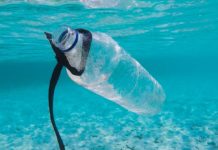This article has everything you need to know about how to help save the environment.
Taking the initiative to save and reuse resources is one of the best things you can do to protect the environment and is easier than you think. Start gradually and do your part, improving your daily habits. To make your contribution, try to reduce water and energy consumption; change your diet and transport ways to conserve natural resources; reduce, reuse and recycle to be more respectful of the ecosystem.
Once you have achieved a more sustainable lifestyle, you can also engage in awareness-raising and information initiatives so that others can do the same.
How to Help Save the Environment:
1. Adjust the internal temperature of your home.
If possible, set the heating system or air conditioner to a slightly lower or higher temperature than the outside temperature. This way, the appliances will not have to load. What’s more, the warmer the radiators, the more expensive they are; the same goes for air conditioning: the colder it gets, the higher the bill will be.
2. Use the old washing line instead of the dryer.
Dryers are some of the most energy-intensive appliances in most homes, after a refrigerator and air conditioning. Be aware that air-dried clothes smell of freshness and are more environmentally friendly.
3. Turn off all electrical devices when they are not needed.
A good rule of thumb is to turn off electrical devices when you are not using them. This applies to lights, TVs, computers, printers, video game consoles and so on.
4. Use LED bulbs.
LED bulbs cost more than normal bulbs, but the benefits outweigh the costs. They use 25-85% less energy, last 3-25% longer and are environmentally friendly.
5. Do laundry in the machine only under full load.
Using a washing machine for only a few dirty clothes will waste water and electricity. Save and reduce electricity by starting the machine when the basket is full.
6. Choose a energy-efficient kitchen faucet.
Consider installing low water consumption faucets and nozzles in your kitchen and bathroom, overhead shower in the shower and saving water in all your bathrooms in your home. A low-flow overhead shower can cost just over €10.00, but can reduce water consumption by 30-50%.
7. Choose consciously to reduce water consumption.
By reducing water wastage, not only will you help to protect water resources for future generations, but you can also save on your bill.
8. Measure the energy consumed by your devices.
You can buy an electricity meter. Simply connect the device to the meter to determine the power consumption. Not only does it detect how many kilowatts the device consumes when it is turned on, it also tells you whether it will continue to consume power when it is turned off.
SEE ALSO: How To Create a Minimalist Home: Here Are 16 Tips To Get You Started
9. Be a consumer who is careful about waste.
Before buying a product, ask yourself what impact this may have on people and the environment. Reflect your purchases when you buy a large jam jar, when you buy one that is packed in jars, and when you need to choose an eco-friendly car. But don’t be stressed. Start gradually.
10. Turn on the dishwasher only when it is full.
These machines not only consume a lot of water, but also a lot of electricity to heat water. If you only use it when it’s fully charged, you can save an average of $30 on your bills and reduce your CO² emissions.
11. Hand over household items that you no longer use so that someone else can recycle them.
Instead of throwing them away, consider selling or passing them on to those who can use them. Give clothes and household items in good condition to a charity or voluntary organisation.
12. Use public transport.
If you live in a public transport area such as a bus, tram or metro, consider these other options to go to work, school or other places in the city. By choosing public transport instead of the car, you will help reduce traffic and the use of non-renewable resources such as petrol.
13. Don’t waste your food.
Organize yourself so that you don’t cook more than you think you’re eating. Keep the leftovers and use them for the next meal. If you waste a lot of food, for example after a party, share it with friends or neighbours.
14. Dispose of dangerous waste properly.
Many materials including fluorescent bulbs, detergents, pharmaceuticals, pesticides, vehicle fluids, paints and electronic waste (including batteries and plugs) must be disposed of properly. Never throw them away as they are in dumps, ditches or manhole covers.
15. Choose paper products made from 80-100% recycled material.
If the product is made almost entirely from post-consumer material, it’s even better. However, even in these cases, do not exaggerate. Use toilet paper, handkerchiefs and paper towels sparingly.
16. Use recyclable items to reduce landfill.
Although disposable items are very affordable, avoid everything that is designed for single use and thrown away, as this not only helps to increase the amount of waste, but eventually becomes more expensive.
17. If you have a swimming pool, cover it when you don’t use it.
This will significantly reduce evaporation and you will need less water to replenish it. The more water evaporates, the more you will need to maintain a full tank. Uncovered, you will use 30-50% more water.
18. Transform useless garbage into fun and sweet or new and original items.
Recycling is fun and valuable. Instead of throwing away, use new things for unused things, creating jewelry, home accessories or clothes.
19. Process to produce less waste.
Try to recycle glass, metal, plastic and paper products as much as possible. If there is a selective waste collection service in the municipality where you live, use it. If it is not there or you need to dispose of special items, go to a special waste collection point.
20. Eat less meat and dairy products.
The production of this food requires a high consumption of resources. Reducing the consumption of meat and dairy products by increasing the consumption of vegetables is a way to protect the environment and maintain health.
SEE ALSO: How To Reduce Water Consumption At Home: 15 Water Conservation Tips
21. Buy local food to reduce contamination caused by food transport.
Transporting food from remote locations requires wasting energy and resources, as food travels by truck, train, plane or ship – all contaminants. In addition, local products are fresher and therefore have a higher nutritional value.
22. Organise a car pooling service to go to work or school.
Organise with one or two people to go to work or make an agreement with other parents to take your children to school. In this way, you will help the environment by saving petrol and avoiding unnecessary maintenance costs for the machine. I agree with other parents to accompany their children to school or after-school activities.
23. Plan different tasks and prepare the actions accordingly.
It is much more effective to develop a route that will allow you to make all the necessary stops for your benefit. This way the journeys will be a bit long, but few and well organized, so you will avoid constant travel on the same roads.
24. Buy an electric car if you want a new vehicle.
You can also consider a hybrid car equipped with a gasoline and electric motor. Not only does it produce less pollution, but it also saves you money because you will not need much gasoline.
25. Make a donation to protect the environment.
There are hundreds of organizations that deal with ecosystem issues. Choose one that reflects your vision and gives you the money to help you achieve your goals.
26. As a volunteer in your free time, promote environmental recultivation.
You can help by collecting rubbish, repairing bicycles, planting trees, growing gardens, cleaning rivers and raising awareness. Find an activity that fits your interests and try to make a contribution.
27. Join an environmental organisation.
Choose an association committed to environmental interests and protection such as Greenpeace, WWF or Friends of the Earth and become a supporting member. You can choose an ecosystem conservation organization in the broad sense or a group that has a specific mission.
I want to thank you for taking the time to read my article about how to help save the environment. I sincerely hope its contents have been a good help to you.



![How To Live a More Environmentally Friendly Lifestyle: [55 Tips] how to live a more environmentally friendly lifestyle](https://perfect24hours.com/wp-content/uploads/2020/01/stock-photography-D0xQQsZovws-unsplash-218x150.jpg)

![How To Clean Your Room Fast Step By Step: [In-Depth Guide] how to clean your room fast and easy](https://perfect24hours.com/wp-content/uploads/2020/01/jeshoots-com-__ZMnefoI3k-unsplash-218x150.jpg)
![34 Ways To Use Less Plastic In Daily Life: [Only Best Tips] how to use less plastic in daily life](https://perfect24hours.com/wp-content/uploads/2019/07/brian-yurasits-k5MJm3U07SA-unsplash-218x150.jpg)



![How To Deal With Problematic Neighbors: [11 Clever Strategies] how to deal with noisy neighbors](https://perfect24hours.com/wp-content/uploads/2019/03/samuel-zeller-28774-unsplash-218x150.jpg)
![How To Deal With Difficult Neighbors: [The Ultimate Guide] how to deal with difficult neighbors](https://perfect24hours.com/wp-content/uploads/2018/04/mark-skeet-535066-unsplash-218x150.jpg)
![10 Ways To Live Longer Life [And Make Ours Lives Better] how to live long life](https://perfect24hours.com/wp-content/uploads/2018/04/kevin-delvecchio-273275-unsplash-218x150.jpg)
